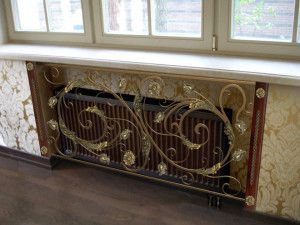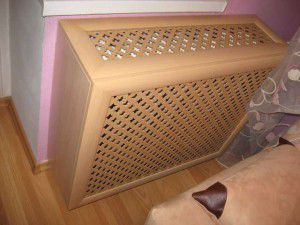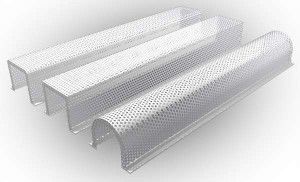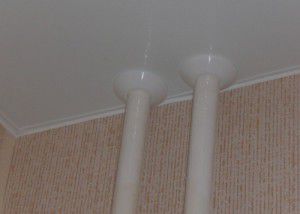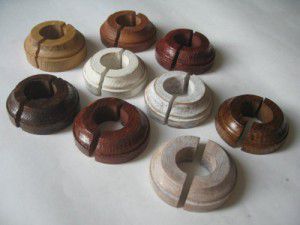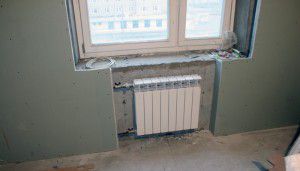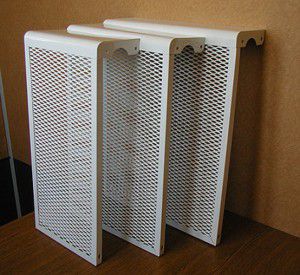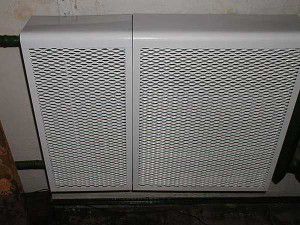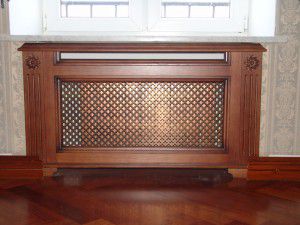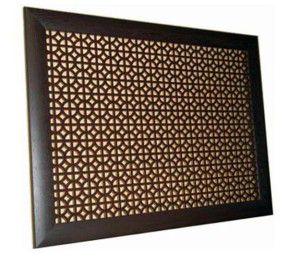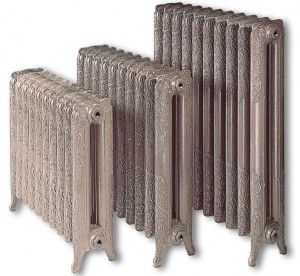The main function of the heating system is to maintain a comfortable temperature level. But besides this, during the design, you need to consider the aesthetic side. The appearance of pipes and batteries should be harmoniously combined with the overall interior of the room. This requires special decorative elements for heating: screens, panels, lining.
Functional qualities
Decorative radiators are necessary to create a unified style in the room. An alternative is special screens and covers installed on radiators and pipes. But how to choose a suitable model and what should you pay attention to first of all?
Modern decorative finishes for heating radiators perform several functions. They are installed on open heat supply elements and partially or completely hide the structure. At the same time, a number of tasks are solved:
- A harmonious combination of heating elements with the overall interior of the room;
- Protecting residents from severe heat radiation. Actual for systems with high temperature operation;
- Reduced dust and dirt. Timely installed decorative fencing of radiators will allow much longer to preserve the appearance of the battery;
- Some metal panels contribute to a more even distribution of thermal energy. Their uniform heating from the heating radiator improves the natural air circulation of the heater.
How to choose the decorative rings for heating pipes or the battery screen? First of all, you need to find out the required characteristics of the structure and the material of its manufacture.
Installed decorative panels for radiators should not affect heat transfer.
Design requirements
When choosing a decorative element of the heating system should be guided by certain criteria. It is important to remember that in addition to the aesthetic side, it should not worsen the heat supply parameters, as well as negatively affect the health of those living in the house.
The most common mistake is to install structures that are not designed to withstand high temperatures. Plastic decorative boxes for heating pipes must withstand constant heat without the release of chemical compounds or changes in color and shape. In addition, it should be noted such required qualities of the system overhead elements:
- A slight increase in the total volume of the radiator or pipe. Ideally, the distance between the pad and the battery should be 5-7 mm.
- Reliability of fastening. Possible mechanical influences cannot affect the location of the decor.
- Strength.
In addition, it should be noted simple installation and dismantling. The latter is important when performing repair or maintenance work, i.e. if necessary, decorative covers on radiators can be quickly removed.
After the installation of the decorative element, there should be free access to the radiator or pipe tying devices - shutoff valves and temperature regulators.
Decorative elements for pipes
Highways occupy most of the heating system. They are intended for transporting coolant to radiators and pipes. Another feature is the location of the pipelines in the house. Often the trunk is mounted in an open way - along the wall.
In this regard, problems arise not only with appearance, but also with security. Increases the likelihood of getting burned by touching the hot water supply pipe. You can prevent this in the following ways:
- Decorative lining for heating pipes with good thermal insulation;
- Hiding the trunk behind the false walls. This is a laborious, but most effective way to isolate the pipeline from possible external influences.
Each of these methods has a number of advantages and disadvantages. To choose, you should familiarize yourself with the features of the decorative structure, the materials of their manufacture and the method of installation.
The best way to isolate pipes is to install them in the gates. However, by standards this cannot be done in load-bearing walls.
Decorative boxes and rings
The easiest way to hide the heat main is to install a duct on it. It consists of a mounting and patch parts, which are interconnected using a locking mechanism. Such decorative panels for heating pipes are convenient for installation in an already installed system.
However, it is difficult to choose a ready-made model, since the location of the pipes relative to the wall and floor is always different. Therefore, they prefer to do the construction on their own. To make a plastic decorative box for heating pipes, you will need to perform the following actions:
- Measure the distance between the trunk, floor and wall.
- According to the data obtained, draw up a panel installation diagram. When using plastic linings, the minimum distance should be 12-15 mm.
- Install the frame from galvanized profile.
- Install plastic panels and decorative elements - corners, end caps, etc.
The service life of decorative linings for heating pipes of this kind depends on the quality of the plastic panels. During the drawing up of the scheme, it is important to consider access to shut-off valves and places for joining highways. In these areas, there is always a high probability of a leak or rush.
If the appearance of the system only partially needs modernization, it is recommended to install decorative rings for heating pipes. Initially, they were intended to hide the uneven undercut of the stretch ceiling. However, the ease of installation and good appearance made them popular for decorating heating.
Along with them, other types of decorative pads on radiators are used:
- Pipes are wrapped with jute or hemp rope. These materials have good thermal insulation, which reduces heat loss in highways;
- Heat resistant fabric. However, you should carefully consider the choice of material;
- Painting. The traditional method, often used before the appearance of decorative panels for heating pipes.
The choice of this or that method directly depends on personal preferences and characteristics of the heating system. For painting pipes, you should choose a special heat-resistant composition.
Decorative false walls
If the installation of heat supply is done simultaneously with the repair, you can not make decorative boxes for heating pipes. A better alternative would be arranging a false wall.
The design is a frame made of steel profile or wooden battens. Drywall panels are installed on top of it. Between them and the main wall will be located heating pipes. This method will completely hide the trunk and at the same time improve the thermal insulation in the room.
But even in this case, it is recommended to install decorative linings on heating pipes. They will be necessary for air circulation - hot flows will be replaced by cooled ones. To do this, you can use simple ventilation grills that are installed on the door.
The construction of the raised wall is carried out according to standard technology.In addition, to improve the heat transfer to the load-bearing wall, a layer of foamed penofol is mounted. The general construction scheme with decorative panels for heating pipes consists of the following steps:
- Drawing up a construction plan. It is built only after the final laying of the pipeline and checking the entire heating system for operability.
- Installation of the supporting frame.
- Installation of drywall panels. They mounted revision hatches and ventilation grilles.
The decorative fence of heating radiators is made in the same way. However, due to the specifics of operation, other requirements are imposed on the design.
The steel profile of the raised wall must not come into contact with the heating pipes. This can lead to heat loss and heating of the drywall surface.
Decorative elements for radiators
A feature of the decorative finishes of heating radiators is the obligatory air exchange. That is why you cannot completely close the batteries.
The best way to adapt the appearance of heating elements is to install decorative screens for radiators. It can be a hinged structure or with a battery-independent mount. For already installed systems, the first option is most often chosen, since it is less time-consuming. But if the heat supply is done at the same time as the repair, they make decorative screens for the heating batteries with their own hands.
In order to choose the optimal design and material for its manufacture, one should be guided by the rules:
- Decorative heating radiators are made only of non-combustible materials. The exception is wood and plastic panels. Moreover, the first should be processed with a special composition;
- Hinged decorative plates for heating radiators must have special mounting sites;
- Production material is harmoniously combined with all home decoration.
The most important criterion when choosing decorative panels for heating radiators is the material of manufacture. The life of the element depends on it, as well as visual adaptation to other components of the room.
The installation of decorative screens for radiators is mandatory for schools, hospitals and some public buildings.
Metal decorative panels
For the manufacture of steel panels, stainless or galvanized steel is used. Often the design consists of a frame on which a metal mesh is welded.
Depending on the design of the battery, there are several types of decorative panels for heating:
- Facial. Protect only the front of the radiator;
- With side panels. The best option for remote installation of the heating element.
The main advantage of installing steel decorative fencing for heating radiators is the ability to evenly distribute heat fluxes. They also contribute to better air circulation.
Wooden decorative screens
When using natural wood, preference is given to oak or beech. They are least prone to thermal deformation. As a budget option, you can consider decorative screens for heating radiators from MDF.
The tree is in perfect harmony with almost all types of room design. The advantage is the ability to make decorative screens for radiators with their own hands. It is not necessary to use special types of wood. It is enough to purchase a moisture-proof substitute. The appearance of decorative screens for MDF heating radiators is practically indistinguishable from natural wood.
Step-by-step instructions for the independent manufacture of panels:
- Side and front panels are made of MDF sheets.
- On their plane, vents are drilled, or plastic grilles are installed.
- Using milled wooden battens, the panels are connected into a single structure.
It must be remembered that decorative screens made of MDF should not touch the batteries. Therefore, they are attached to a wall or other supporting structure.
Before self-production, decorative screens for wood batteries should be dried to reduce humidity. The normal rate is 10-15%.
Decorative radiators
In some cases, decorative decoration of heating radiators is not possible. Then it is recommended to purchase designer models that differ from the standard in their individual form.
There are several types of decorative radiators. They can be made from the same materials as standard models. The main difference is the form and the possible presence of decorative design elements.
To select the best option for decorative heating radiators, you must first calculate the required power characteristics. Then you need to decide on the material of manufacture:
- A cast-iron decorative heating radiator is perfect for a classic-style room. Preference is given to floor models;
- Steel batteries. They can be either vertical or familiar horizontal;
- Aluminum and bimetallic. They have a small assortment, which makes it difficult to choose.
In addition, it is important to know the battery connectivity. So, some models of cast-iron decorative heating radiators have only the lower side pipes. Metal tubular batteries have greater connectivity.
Equally important is the cost of decorative heating batteries. Alas, their cost is an order of magnitude higher than that of conventional models. Therefore, the choice should be approached especially carefully.
| Model | Production material | Power, W | Cost, rub. |
| Carisa bricco | Steel | 620 | 121800 |
| Escape 07550 | Tubular steel | 484 | 24760 |
| Carron Verona Section | Cast iron | 143 | 5413 |
| Demrad retro | Cast iron | 132 | 4765 |
Despite the relatively affordable cost, not every cast-iron radiator is suitable for the interior of a room. The best option is to install decorative screens on standard battery models.
The video shows an example of self-production of a decorative screen for a radiator:
